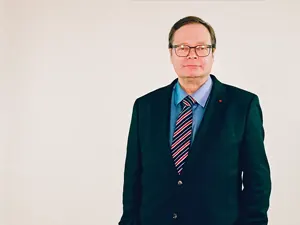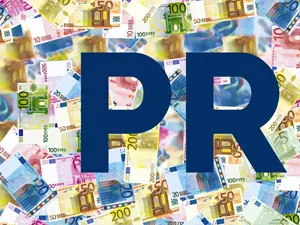
Instagram has long since overtaken Facebook
Social Media is becoming more and more important within the marketing mix! 79% of all large companies (= more than 250 employees) have already recognized this, while only 61% of all medium-sized companies made use of social media! Since user behavior is constantly changing, decision-makers must react accordingly. Here’s a brief overview of the current situation.
Facebook and Instagram, the two social media dinosaurs, have lost popularity, especially among younger target groups. For social media concepts, this implies: In order to reach all target groups, all their respective preferred social media channels should be played on!
1. Facebook
Facebook reaches 28 million people in Germany (50% women and 50% men). However, usage has declined. The trend is falling off still with only just under a quarter of all 14-29 year-olds and 19% of all 30-49 year-olds logging onto Facebook once a day. And only 10% of those over 50 and 1% of those over 70 are still daily Facebook users.
Instagram and Whatsapp are to blame for this: while 40% of German consumers use Instagram, the Whatsapp quota is 69%!
But: A total of 64 percent of all Germans between 16 and 64 use Facebook monthly! And mainly via smartphone (96.1%). They like posts around 8 times a month, while comments are written relatively infrequent (3x/month).
However, Facebook is still number 1 in terms of frequency of use and user numbers. Most users like brand posts in e-commerce, retail, services, fashion, and electronics.
At present, Facebook use seems to be shrinking among all user groups.
2. Instagram
According to current figures, 21 million people (women and men in almost equal numbers) were on Instagram in Germany 2020. And since 2017, the number of created business profiles has increased from 2 million to 12 million. Lifestyle brands from the fashion, e-commerce, beauty and retail sectors have the most interactions. Posted photos (79%) and videos (21%) are visited 32 minutes (under 25-year-olds) and 24 minutes (over 25-year-olds) each day. In 2020, adidas (37 million), adidas Football (31 million), BMW (25 million) and Mercedes Benz (25 million) had the most subscribers.
Instagram continues to grow and should be given even more attention in the marketing mix in the future! Especially regarding the area of influencer marketing, Instagram is the tool: More than 90% of all influencers are on there.
3. Snapchat
Snapchat is a messenger app and is used almost exclusively by 14-29 year olds – only 6% of all Germans ‘snap chat’ daily. This means the app, which can be used to spontaneously send photos, messages or videos (which disappear shortly afterwards), has a predominantly young following. But they are convinced: Snapchat is used for around 30 minutes a day and opened around 30 times.
Snapchat is especially popular in the U.S. (108 million users) and India; Germany ranks 7th internationally. The platform is suitable for augmented reality campaigns; digital try-ons are to be offered for the cosmetics industry.
4. TikTok
Tiktok, on the other hand, is booming: In Germany, the video app, on which videos backed by music are posted, has 10.7 million users! 60 percent of the predominantly younger target group (ages 10 to 29) are girls, who open the app an average of 8 times a day and spend 52 minutes there. Tiktok encourages its users to upload their own videos and is primarily trend-driven. With branded hashtag challenges and brand takeover formats, companies have the opportunity to quickly achieve high awareness among a young target group. Tiktok archives the most successful campaigns.
Ads can also be created in the Tiktok Ads Manager.
5. Twitter
The globally important social media network has 5.2 million users in Germany and is primarily used by men (73 percent), although the distribution across age groups (14 to 50+) is relatively homogeneous (4-1 percent).
Important to note: 24.6 percent of verified users are journalists.
Twitter continues to be one of the most important social media tools! With a good content strategy, brands are particularly successful on Twitter. For up-to-date information on the development of Twitter opportunities for advertisers, such as engagement with ads, see a recent article by Jan Firsching.
6. LinkedIn
Linkedin – still primarily a business network – is growing continuously: The inclusion of new post options such as likes, comments and stories makes LinkedIn even more communicative: 50 percent more shared content has been recorded since then.
Around 50 million companies worldwide have a LinkedIn profile. As a company, it is worthwhile to arrange the account in detail, to maintain it well and to post regularly – this increases the click rate by 30 percent! Particularly picture collages achieve a large reach currently.
7. XING
Xing is used daily by both women and men (1 percent each), especially in the 30-49 age group. Currently, 19 million users in Germany use the network, whose members primarily network to make or maintain professional contacts. More than half have a high school diploma or a university degree, and just under half occupy senior management positions.
While about 40 percent of users work in companies with more than 500 employees, the largest group of companies on Xing is small and medium-sized enterprises. Many executives from medium-sized companies (service, industry, IT and trade) are represented there. Therefore, Xing is particularly interesting for addressing executives from the B2B sector!
Conclusion
It is impossible to imagine marketing without social media! Younger target groups are most strongly represented in almost all networks. And Instagram has long since overtaken Facebook.
While LinkedIn and Xing focus on industry-specific target groups, all age and professional groups can be reached with the other platforms. Increasing access through mobile devices is boosting daily usage time.
Since trends have a strong impact on usage behavior, advertisers should constantly monitor changes in the social media space. With all this considered, nothing will prevent a successful campaign!




0 Comments